Published: 21 May 2021 | Category: Technical advice note | Audiences: Road traffic engineers & consultants, Roading contractors
This note is intended to provide effective guidance on the layout of pedestrian infrastructure designed to provide access for mobility scooters. Infrastructure designed in accordance with this guidance will be considered acceptable when being considered for funding. The guidance may be applied from the date of publication.
This note is intended to provide effective guidance on the layout of pedestrian infrastructure designed to provide access for mobility scooters. Infrastructure designed in accordance with this guidance will be considered acceptable when being considered for funding. The guidance may be applied from the date of publication.
An increasing number of residents are using mobility scooters to get around our urban areas. However, many accessways and pathways were designed for access according to the dimensions of wheelchairs as per NZ Standard 4121:2001 Design for access andmbility: Buildings and associated facilities. This note sets out the minimum and desirable turning paths and clearances for consideration during the design of paths and crossings to cater for mobility scooters. This will enable improved accessibility for mobility scooter users.
NZS 4121 stipulates a width envelope of 1.2m and turning path of 1.985m for mobility scooters (sections 4.5.3 and 3.3.2). To confirm or revise these values, a variety of commonly available mobility scooters were measured and tested in 2017 by staff of Palmerston North City Council (Table 1).
Table 1: Typical mobility scooter dimensions (in metres)

In some cases, the mirrors add additional width beyond the body width; in others, the mirrors are not as wide as the widest part of the body. The 95th percentile width is 0.92m and the widest mobility scooter including mirrors is 1.01m for the CTM HS928 large, (pictured on the right) with optional canopy.
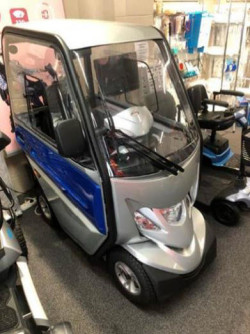
Figure 1: The largest scooter is just over 1.0m wide
An additional 0.2m of shy space should be added to each side to allow for driver error and comfort. Given the low speed of the pedestrian environment, any speed corrections should be addressed with the above addition. This results in a 1.3m (95th percentile) to 1.4m (maximum) envelope instead of the 1.2m stipulated in NZS 4121
The minimum 95th percentile turning radius (as shown in Table 1) is 1.8m. This is measured to the outside of the turning path. Including the shy space clearance brings the turning radius in line with the NZS 4121 specified 1.985m.
Table 1 omits the largest all-terrain scooter currently available, with a turning radius of 2.25m. It would be impractical to design for a relatively uncommon scooter, although it would traverse most design features covered in this document.
The Pedestrian Network Guidance includes straight, angled, and staggered (chicane) refuge island cutthroughs. Regardless of the layout, median refuges should be designed to fit at least one mobility scooter and rider, with wider passages for multiple persons and devices on busier roads. Figure 2 demonstrates that an accessible route width of 1.6m to 1.8m would be of no problem to the larger turning radius of the largest mobility scooter.

Figure 2: Turning path through angled median refuge
For chicanes, Figure 3 demonstrates the minimum spacing required for the 2m desirable design turning radius. Note that many median refuges are 2m wide; in that case the use of fences would exclude the mobility device from traversing the chicane; therefore, it would have to navigate around the refuge (ie in the roadway).
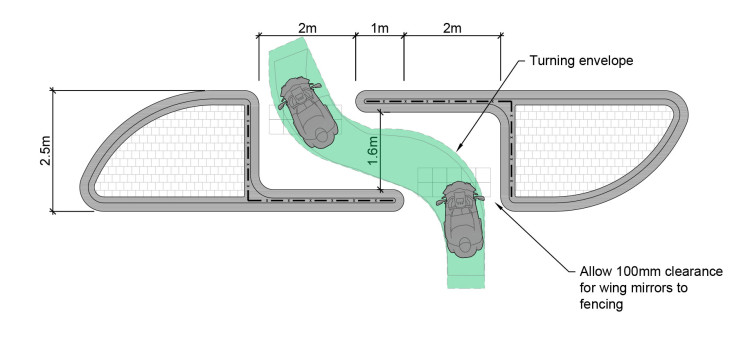
Figure 3: Turning path through median refuge with chicane
The ideal width of a footpath is at least 1.8m with shared paths at least 3.0m. A mobility scooter rider can turn on to or from such paths quite easily by using the full path width, but there are often situations such as other path users that constrain the turning path. Figure 4 shows how a radiused corner is required for a turning movement when the clear path width is constrained and the minimum 1.5m kerb ramp is used.
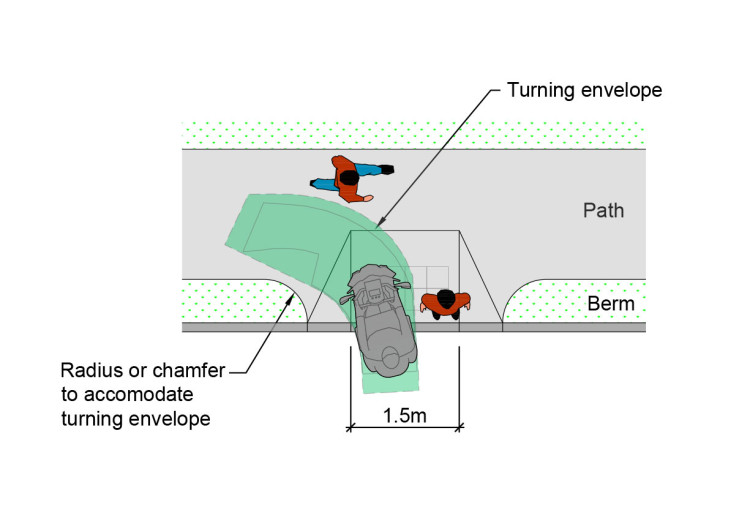
Figure 4: Turning path at kerb ramps and path junctions
All path users making a turn will benefit as they can minimise their travel distance and not need to step/roll over landscaping. The radius will vary depending on the path widths but l.0m should be the desirable minimum and 0.6m the absolute minimum. Corners of less than l.0m radius will typically be formed with a diagonal chamfer.
Staggered staple barriers are generally not recommended as they introduce personal security issues and are difficult for people using a double pushchair. If there is no other option than to install barriers (eg rail level crossings) the barrier spacing should be designed to accommodate the maximum size scooter (Figure 5).
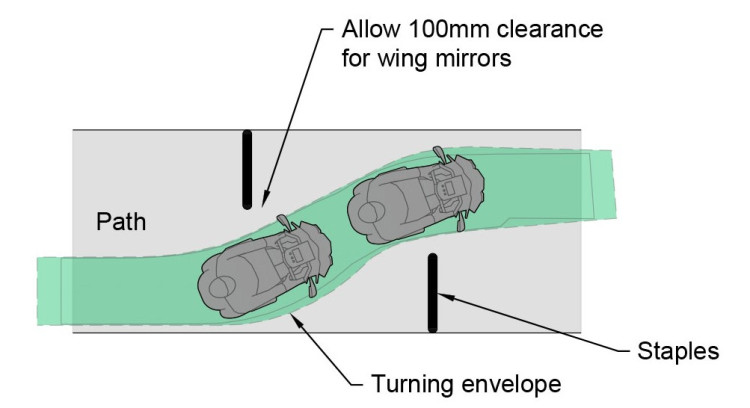
Figure 5: Turning path through staple barrier at rail crossing
This figure is not dimensioned because the spacing of barriers is dependent upon path and barrier width. Typically, 2m spacing between barriers will permit passage of a mobility scooter and most cargo bicycles or tandem bicycles, and barriers shouldn't extend more than half-way across the path. Utilise turning path software to confirm accessibility.
Bollards and/or fences are often used to control access at the terminals of accessways, footpaths and shared paths. Access control devices on paths (Waka Kotahi 2020) discourages centrally placed elements such as bollards as they can be a serious injury risk. If they must be provided, the referenced document illustrates a layout that will permit mobility scooter access. Preferably, the terminal treatment should be like the recommended practice in Austroads Guide to Road Design Part 6A where the entry and exit paths are separated by a central garden.
As shown in Figure 6, a minimum clearance of 2.6m is required for two mobility scooters to pass simultaneously. This is a larger dimension than the 1.8m for two wheelchairs shown in NZS 4121:2001 (fig D10 p113) because mobility scooters are wider.
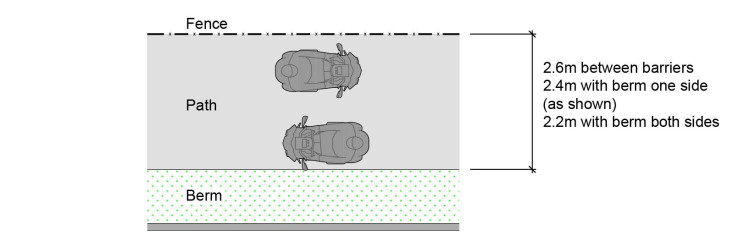
Figure 6: Clearance required for two scooters to pass one another
The clearance for one mobility scooter can be as little as 1.2m if a vertical element is on only one side (e.g., the other side is a grass verge) but must be at least 1.3m if there is a vertical element on both sides.
Some design software packages include turning path software and a "special vehicles" design vehicle selection including mobility scooters. The mobility scooter turning path values in the most common software are slightly less than the 95th percentile values in Table 1 but the software may still provide a useful starting point for path and crossing facility design. Ideally, all paths and crossing facilities will be wide enough for high volumes of travellers to comfortably share space sideby-side and the dimensions presented in this note will be exceeded. For constrained situations, the dimensions presented in this note serve as a desirable minimum rather than the lower minimums contained in other standards and guides.
The intention is to expand this technical note as other technical information and feedback is received from practitioners. Further guidance on other requirements such as vertical geometry may be developed in the future. There will also be regular reviews to ensure that the advice provided gives practitioners effective guidance for their infrastructure.
Author: Waka Kotahi NZ Transport Agency
Published: May 2021
Version: 1
Location: https://www.nzta.govt.nz/walking-cycling-and-public-transport/walking/walking-standards-and-guidelines/pedestrian-network-guidance/related-guidance-notes-and-tools/
To submit documents or if you have any questions or feedback, please contact the Team Leader – Multi-Modal at multimodal@nzta.govt.nz
[signed]
David Darwin - Chair, Ratification Group
Vanessa Browne - Delegated Approver